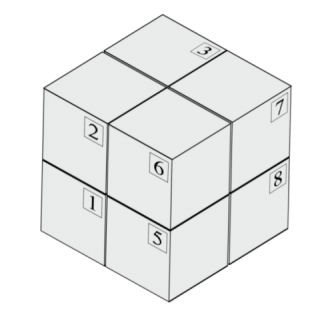Strategic Management Models
Proprietary Strategic Management Models and Frameworks for Professional firms
Every professional service firm (PSF) is affected by loss of useful work. We have identified nine critical control points (CRICPs) where organizational entropy can be managed most effectively.
For each CRICP, we’ve developed unique models that serve as navigational maps. We use these models in our consulting practice to better explain interdependance of key dimensions, inevitable trade-offs, consonances, and paradoxical contradictions your teams will be faced with when making crucial business decisions.
Each model can be used separately in standalone advisory services. Their combinations form special solutions. Jointly, these models represent one of the most robust frameworks of strategy making.
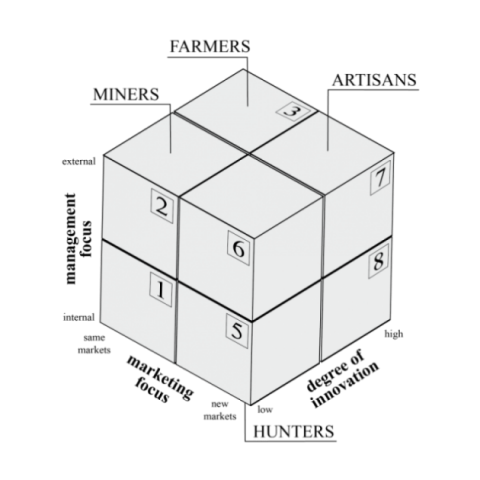
Map 9: Growth Strategy Map
Growth is a CRICPcritical control point for most professional firms. Left unattended, the firm may find itself in a stalemate position with resources being pulled into opposite directions.
You may be surprised to discover that not all key stakeholders (partners, principals, C-level folks, and directors) are onboard with the current direction of growth. There are three fundamental dimensions that explain the preferences folks have, and are prepared to vehemently defend.
Typically, we use this map in three solutions (Sustainable Growth Firm, Growth Catalyst Firm, and Future-Proof Firm), and as a standalone advisory service.
Map 8: Map of Organizational Structure
Organizational structure determines firm’s capabilities. With that in mind, top management often gravitate toward one of the two connclusions. Despite the two popular notions that (1) a firm can achieve anything regardless of configuration, and (2) that a particular appearance in form will inevitably increase the firm’s desirable effectiveness in XYZ — alas — this is not so.
Both assumptions are incorrect. To be more precise, not absolutely correct. For as long as we have time, organizations will change in form. In fact, it is desireable that they do so.
In this model, we review eight distinct configurations available to professional firms. These configurations ought to be viewed as enablers, rather than set-in-stone formations to be held in place by steel edicts. Unqiue form combinations, allowable errors, and anomalies make organizations special, and actually reveal additional capabilities.
This model is part of: Sustainable Growth Firm, Productive Profitable Firm, and Future-Proof Firm.
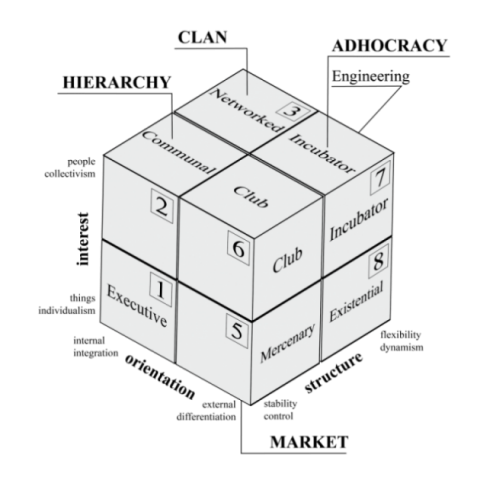
Map 7: Map of Organizational Culture
There are eight generic types of organizational culture, each with its own unique characteristics. Depending on the size of the firm, each group (or division) might have its own organizational subculture. Firms typically don’t possess homogenous cultures. What’s more, no two firms are culturally the same.
Undestanding which subcultures are complimentary, and which will be in opposition is crucial to avoiding loss of useful work. It is key to know who at your firm is capable of influencies (and eventually changing) group’s subculture, and to what extent it may be necessary.
This map is present in these solutions: Sustainable Growth Firm, Talent Magnet Firm, and Future-Proof Firm; and as a standalone advisory service — Organizational Culture suite.
Map 6: Market Position Map
Market position(s) is where your firm (and individual practice groups) finds itself today in the market. It may be different from where your firm used to be in the past, and it may be inadequate for where you are headed.
This model attends to three maps of positioning: contextual, perceptual and experiental (the book on this is in the works, to be hopefully finished by the end of Jan 2026). Apart from typical market positions in verticals, horizontal markets, geographies (etc), there are eight generic market positions on each of the other two positioning maps available to professional firms. Thus, providing at least (!) 64 meaningful ways to differentiate the firm.
We use this model in several solutions such as Client Magnet Firm and Growth Catalyst Firm. As a standalone advisory service, we use these maps in the Market Positions suite. There, we attend to structural configurations first: poles (vertical markets) and spans (horizontal markets), evaluate functional components of your positioning — your services, also your perspective (backed by insights, research, or gut feeling), as well as timing.
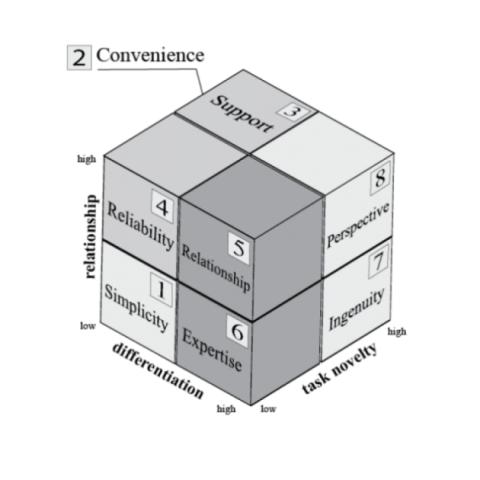
Map 5: Client Management Map
This model is about matching buyer (client) types with supplier (service provider) types to create win-win scenarios where neither party is taking advantage of another. For the most part, this model is about B2B client-vendor relationships.
There are eight generic buyer types, a so-called Poker player behavior, and a Nonbuyer with three subtypes. To deal with different buyer behaviors, this model offers eight distinct sales negotiation scenarios.
This model is part of several solutions such as Client Magnet Firm and Profitable Productive Firm. As a standalone advisory service, we use the map in the Client Management service, where we attend to many topics with a handful of different models. For example, apart from this map, we go through service offering design for clients, best-fit client profiles with scorecards, value components to alter your services, and much much more.
We use this map in the following solutions: Client Magnet Firm and Productive Profitable Firm; and as a standalone advisory service — Client Management suite.
Map 4: Map of Marketing Content-Channels
Professional service firms are in the market for clients and talent simultaneously. The best people to market the firm are professionals themselves, of course. However, individuals differ in their preferences toward marketing activities.
This model will help you examine marketing content-channels that are more natural for your firm. Something your professionals can do, are willing to do, and will actually commit to doing on a regular basis to attract both clients and future colleagues.
This model is part of several solutions such: Client Magnet Firm and Talent Magnet Firm; and as a standalone advisory service — Marketing Content-Channels suite.
Map 3: Team Management Map
There are different types of groups (teams). Some groups are more suitable for particular tasks than others. The model will explain the fundamental differences between groups. This will allow your team leads to assign people who fit team tasks better.
In addition, there are ten team roles to be aware of. Each person on the team is likely to possess unqiue characteristics, something their peers might benefit from. There are roles that don’t collaborate quite well. There are boss-subordinate team roles that should be avoided. And, of course, there are complimentary roles as well.
This model will help your managers fine tune their team compositions for more productive, enjoyable, and effective work. And this model is most helpful for large-scale long-term cross-divisional task force projects where individuals haven't had the opportunity to work together before.
This map is used in these solutions: Collaborative Eager Firm and Growth Catalyst Firm; and as a standalone advisory service — Team Performance suite.
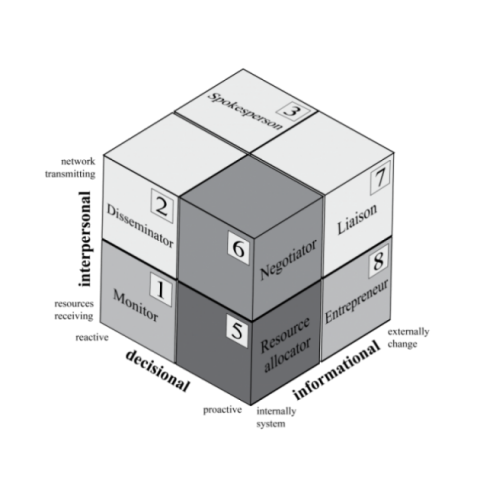
Map 2: Project Management Map
This model is about ten managerial roles that a project manager (partner, team lead, etc.) should be able to transition in and out during client engagements. The model will suggest which soft skills the manager needs to upgrade. It also shows which managerial activities will be more important for each individual professional.
Functional capabilities of a professional isn’t the sole factor that determines project’s success. Professional’s motivation play the part, too. This model shows how to create an environment inducive of self-motivation. Perhaps, occasional attainment of the sense of flow.
This model is part and parcel of the following solutions: Collaborative Eager Firm and Productive Profitable Firm; and as a standalone advisory service — Project Management suite.
Map 1: Map of Professional Career
One of the obvious ways to decrease voluntary turnover is to pay professionals well. Find out the fair market rate they could get tomorrow if they went to work for your competitor, and don’t pay less than that. However, this isn’t the only factor of employee satisfaction.
This model will help you explore eight career anchors — a self-image of a professional, if you like. Personality traits, behavioral proclivities, and natural strenghts are another part of the puzzle.
Indeed, eligibility (knowledge, experience, subject matter expertise, hard skills) of a professional is important. But so is the suitability for the position. This model will help with your HR strategy.
The map is applied to these solutions: Collaborative Eager Firm and Talent Magnet Firm; and as a standalone advisory service — Career and Skills suite.
Auxiliary management models
The following models are typically included in one of the aforementioned higher-level models.
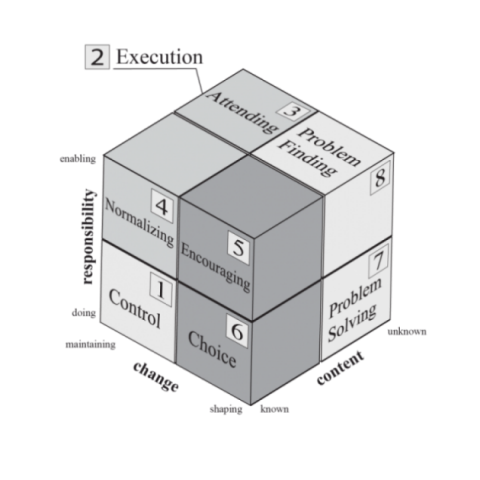
Map of Service Offering Design
Professional services is a three-prong beast. First, a service is what your clients pay for. Therefore, what functional services you choose to provide will impact your clientele composition, and vice versa. Second, your services are provided (for the most part) by professionals. Hence, who you hire will impact what you do, and what you do will attract certain types of professionals (both from functional and suitability perspectives).
Finally, the decisions around service provision will impact your firm’s top & bottom lines and overall direction: current positioning and attainable future market positions. That’s a handful of reasons to pay attention to service offering design (SOD).
This model attends to several things: client motivations, goal facilitators, value elements, value activities, and professionals’ natural strengths. You will know what to add, to trim, to mute, and to pump up in order to create win-win scenarios for your firm, your professionals, and your clients.
This model is currently under revision

Map of Sales Negotiations
This model examines eight generic buyer types and several special types. Primed by motivational forces, each buyer type exhibits different behavior during sales pitches and negotiations. The model offers a framework with eight negotiation tactics for your business development roles, account managers, sales managers and partners.
Most tactics have been described in business literature. This model builds on that, and offers several additional tactics. A visual 3D map makes it easier to navigate the sale negotiations.
Additionally, this map shows unlikely client transitions during negotiations, as well as more probable ones. We use this model in the Client Management suite.
Fill in this request form
If you would like to know more, please fill in this contact form.
Please note that we will automatically add your email to our mailing system for our lovely e-doves to start delivering helpful updates and insights.
You will be able to unsubscribe whenever you feel like strangling a particular e-winged messenger.
